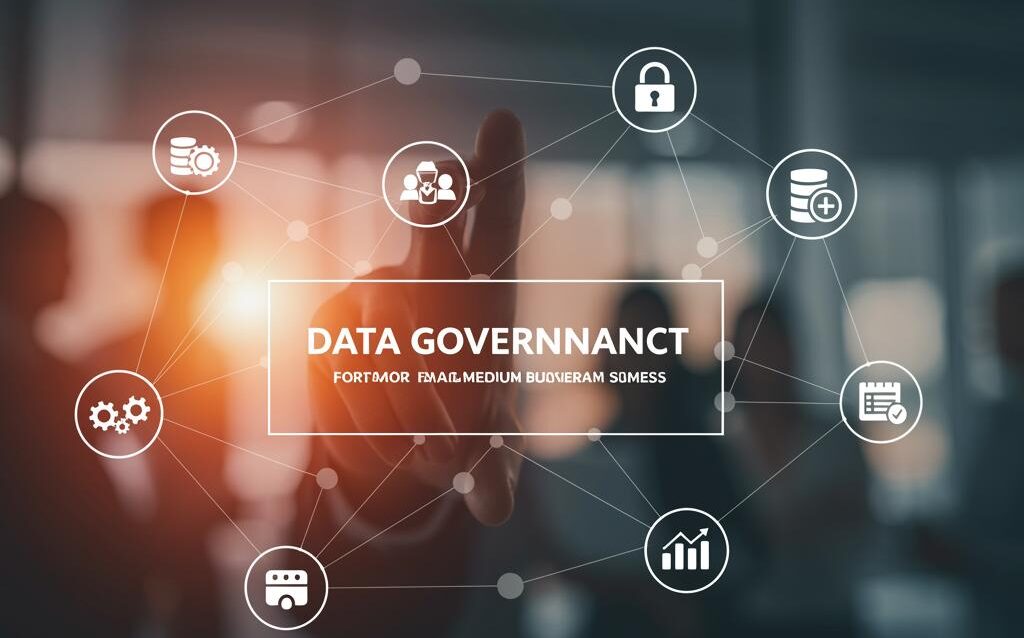Data Governance Framework: SMB Guide
Data Governance Framework for Small to Medium Businesses (SMBs)
Data is the lifeblood of any modern business, regardless of size. However, for Small to Medium Businesses (SMBs), effectively managing and governing data can be a daunting task. Many SMBs lack the dedicated resources and expertise of larger enterprises. This blog post aims to provide a practical framework for data governance tailored specifically for SMBs, focusing on achievable steps and tangible benefits.
Why Data Governance Matters for SMBs
You might think data governance is only for large corporations, but that’s a misconception. For SMBs, effective data governance can lead to:
- Improved Decision-Making: Accurate and reliable data leads to better-informed decisions.
- Increased Efficiency: Streamlined data processes reduce redundancy and save time.
- Reduced Risks: Compliance with regulations (e.g., GDPR, CCPA) avoids costly penalties.
- Enhanced Customer Experience: Personalized and targeted marketing based on reliable customer data.
- Competitive Advantage: Data-driven insights can identify new opportunities and improve existing processes.
Key Components of a Data Governance Framework for SMBs
A successful data governance framework for an SMB doesn’t need to be overly complex. Focus on these core components:
1. Data Governance Roles and Responsibilities
Clearly define who is responsible for what aspects of data. This doesn’t necessarily mean hiring new staff; it can involve assigning responsibilities to existing team members.
Designate a Data Steward
A Data Steward is responsible for the overall quality and accuracy of data within a specific domain (e.g., customer data, financial data). This role involves:
- Defining data standards
- Monitoring data quality
- Resolving data issues
Identify Data Owners
Data Owners are responsible for the security and access control of specific data assets. They determine who can access, modify, or delete data.
Establish a Data Governance Committee (Optional)
For larger SMBs, a small committee can provide oversight and guidance for the data governance program. This committee should include representatives from different departments.
2. Data Quality Management
Ensuring data quality is crucial for accurate reporting, effective decision-making, and regulatory compliance.
Data Profiling
Understand the characteristics of your data, including its completeness, accuracy, and consistency. Use data profiling tools (many free or low-cost options are available) to identify potential issues.
Data Cleansing
Implement processes to correct errors, remove duplicates, and standardize data formats. Consider using data cleansing tools or scripts to automate this process.
Data Validation
Establish rules and checks to ensure that new data meets predefined quality standards. This can involve simple validation rules in spreadsheets or more sophisticated data validation tools.
3. Data Security and Privacy
Protecting data from unauthorized access and complying with privacy regulations are essential.
Access Control
Implement strict access controls to limit access to sensitive data based on the principle of least privilege. Only grant access to those who need it to perform their job duties.
Data Encryption
Encrypt sensitive data at rest and in transit to protect it from unauthorized access. Use strong encryption algorithms and regularly update encryption keys.
Privacy Compliance
Understand and comply with relevant privacy regulations (e.g., GDPR, CCPA). Implement processes for handling data subject requests (e.g., access, deletion, correction).
4. Data Documentation and Metadata Management
Documenting your data assets and their characteristics is crucial for understanding and managing your data effectively.
Data Dictionary
Create a data dictionary that describes the meaning and purpose of each data element. This helps users understand the data and use it correctly.
Data Lineage
Track the origin and transformation of data as it moves through your systems. This helps you understand the impact of data changes and troubleshoot data quality issues.
Metadata Management Tools
Consider using metadata management tools to automate the process of documenting and managing your data assets. Many affordable or open-source options are available.
Getting Started with Data Governance in Your SMB
Implementing a data governance framework doesn’t have to be overwhelming. Start small and gradually expand your program as your needs evolve.
- Assess Your Current State: Identify your key data assets, data quality issues, and compliance requirements.
- Prioritize Your Efforts: Focus on the areas that will have the biggest impact on your business.
- Develop a Data Governance Policy: Document your data governance principles, roles, and responsibilities.
- Implement Data Governance Processes: Put in place processes for data quality management, data security, and data documentation.
- Train Your Employees: Educate your employees about data governance principles and their responsibilities.
- Monitor and Evaluate: Regularly monitor the effectiveness of your data governance program and make adjustments as needed.
Conclusion
Data governance is not just for large enterprises. By implementing a tailored data governance framework, SMBs can unlock the full potential of their data, improve decision-making, reduce risks, and gain a competitive advantage. Remember to start small, focus on the most important areas, and continuously improve your program over time. By embracing data governance, your SMB can thrive in the data-driven era.
“`

